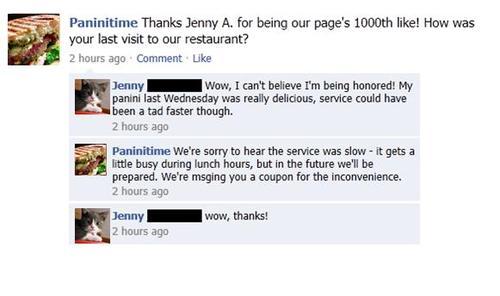 Just as consumers have to be wary about their social media ventures, businesses also have to take precautions. Employees must be informed about the company policy (what? you don’t have a company policy? well, that’s step one!) and companies have to be strict in this area. It’s easy for employees to make mistakes without realizing it, so here are our tips for making sure you have social media rules beforehand so you can prevent some security slips.
Just as consumers have to be wary about their social media ventures, businesses also have to take precautions. Employees must be informed about the company policy (what? you don’t have a company policy? well, that’s step one!) and companies have to be strict in this area. It’s easy for employees to make mistakes without realizing it, so here are our tips for making sure you have social media rules beforehand so you can prevent some security slips.
1. Make sure employees are always informed – Many times, the source of social media mistakes is poorly informed (or not informed at all) employees. Write out an actual set of rules concerning social media, and make it a part of employee orientation. Also give out friendly reminders during the year, and encourage employees to ask questions about what they can post – better safe, than sorry!
2. Don’t let your employees get too excited – It’s great that your company has a new, secret product that will change the world, but don’t let your employees be the ones to make the announcement. In order to keep company activities a secret (especially from competitors), make sure there is a rule concerning social media quotes about products that have yet to be revealed. It also may be better that this company information isn’t revealed to all employees – only to those who are directly related to the project should be informed.
3. Never mix personal with professional – It’s so easy for people to post pictures or write comments that can ruin their reputation and their company’s reputation instantly. Posts that can negatively affect the company or an employee’s future employer should be left for private use.
4. Beware of hackers – Social media has made hacking even easier, as many users don’t utilize privacy controls, and display the hacker’s dream (their name, location, phone number, birthday.) Business sensitive information can be tapped into if the security to those accounts/computers is loose. Use an encrypted file storage for all important files, and encourage your users to change passwords and to be wary of sites that seem suspicious or too good to be true.
However, we aren’t saying social media is taboo at work – a study by Robert Half Technologies showed that 70 percent of employees who are allowed access social media at work are more productive those who don’t have access. Businesses shouldn’t completely prohibit employees from accessing social media, but there should be a clear set of policies.
[Photo: Courtesy of Phillip Martin]

 Being on social media isn’t hard, but being on social media is (haha, confusing? read on, my friend.) Just having Facebook and Twitter and other outlets isn’t enough – your brand has to be actively seeking to enter into conversations with your customers every day. It’s important to not only answer feedback in a timely manner, but to also be the one asking for feedback. When a company asks customers for their opinions, it’s telling consumers that the business cares and wants to improve. Engaging with customers is one of the major steps that companies who are succeeding in social media use.
Being on social media isn’t hard, but being on social media is (haha, confusing? read on, my friend.) Just having Facebook and Twitter and other outlets isn’t enough – your brand has to be actively seeking to enter into conversations with your customers every day. It’s important to not only answer feedback in a timely manner, but to also be the one asking for feedback. When a company asks customers for their opinions, it’s telling consumers that the business cares and wants to improve. Engaging with customers is one of the major steps that companies who are succeeding in social media use.
